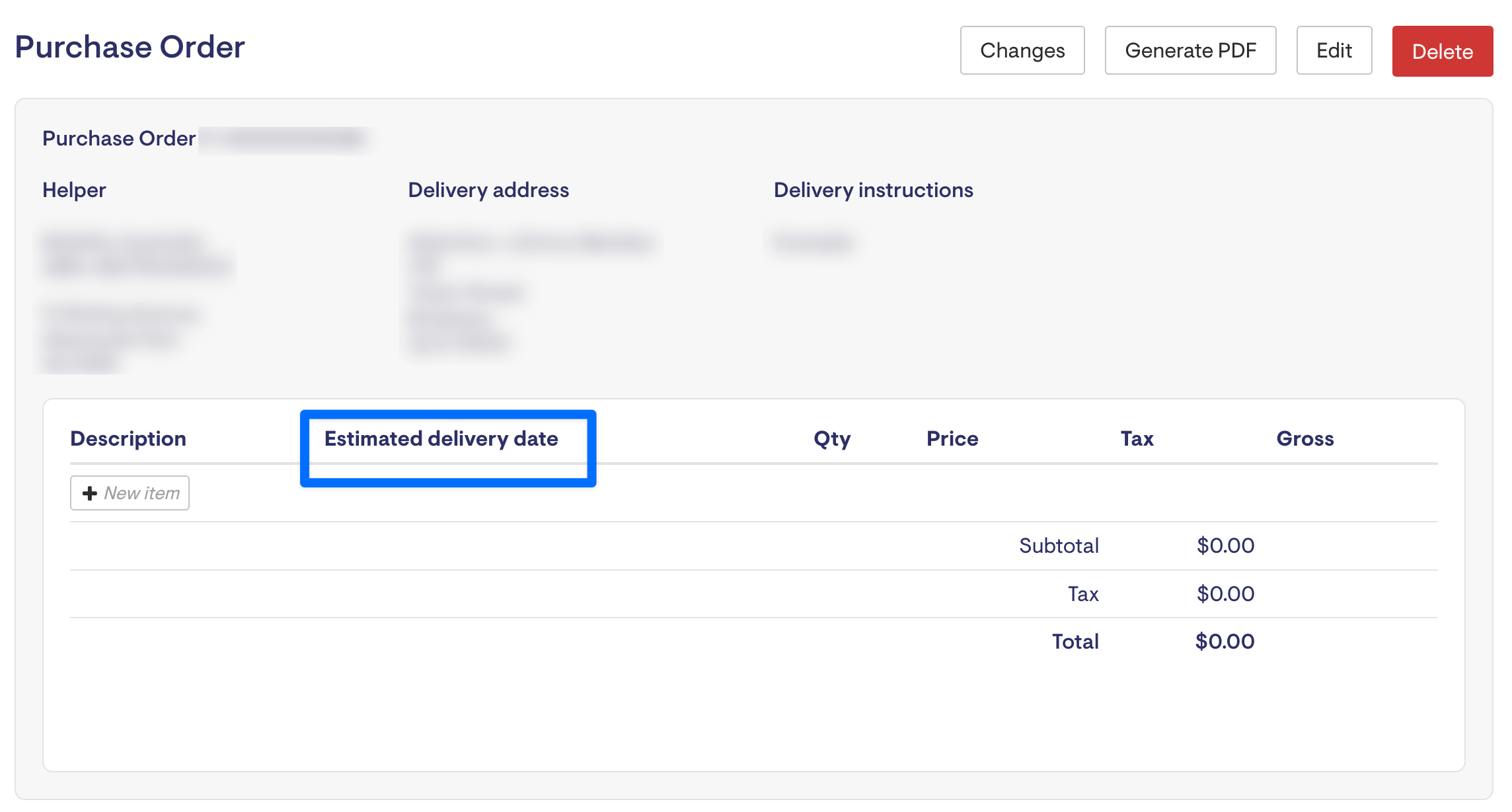22.02.01 Update to purchase orders and other fixes
Here's what's new in Lookout - the latest improvements and bug fixes.
Jump to:
Improvements
Estimated delivery date added to purchase orders
Purchase orders have a new field: estimated delivery date.

The estimated delivery allows you to set the date you expect this service or item to be delivered. In the item details, you can set this date manually or click on the calendar icon to open a date picker.

This estimated delivery date is an optional detail. This date is specific to just this single line of the purchase order, so a single purchase order can include multiple items with different delivery dates.

Entering this date is recommended for all Home Care Package (HCP) clients to improve the projected balance calculation. The projected balance only includes purchase orders not yet matched to an invoice and created before the end of the current open claim period. The projected balance will now also consider this estimated delivery date and will include the following:
-
all purchase order lines without an estimated delivery date, and
-
any purchase order lines with an estimated delivery date before the end of the current HCP Claim period if it is created within that period.
For example, if you are currently in the February 2022 HCP claim period, then the following examples will be included in the projected balance:
-
a purchase order line with an estimated delivery date of 11 February 2022 and no invoice created before 28 February 2022
-
a purchase order line with an estimated delivery date of 28 January 2022 and no invoice created before 28 February 2022
-
a purchase order line with no estimated delivery date and no invoice
However, a purchase order line will not be included in the February projected balance if it has an estimated delivery date of 18 March 2022 and no invoice. Similarly, if a purchase order line was created on 18 March 2022 but has an estimated delivery date of 27 February 2022, it will not be part of the February projected balance.
Purchase order line amounts created after the last day of the claim period cannot be retroactively included in the current balance projection, even with a specified delivery date. However, invoices from these post-period purchase orders can still be considered for inclusion in the current claim period, even if they don't show on the projected balance, as long as the claim period remains open.
Filter by engagement type in Marketplace
A new filter has been added to the Marketplace which allows you to filter your search by the engagement type of a support worker, clinician, or supplier.

By default, this filter is set to "all" but you can limit your search to just show a particular engagement type: employee or contractor.

Selecting either "employee" or "contractor" will limit your results to only those profiles which have that particular engagement type set.

Bugs
-
Fixed: The Membership Account Balances report was not displaying all monthly information (dropping the final few days). This has been corrected -- all entries tied to a specific month now appear inside that month's report.
-
Fixed: The Projected Balance on archived memberships was still 'predicting' that care and package management fees would be charged in the current month. This has been updated to align with how the account fees are charged; once an account is archived, both the actual charges and projected calculation of future fees is stopped.
-
Fixed: Observations from surveys can generate for any survey respondent. When people with certain roles (e.g. authorised representative) were answering a survey and providing a response that falls below a threshold, it wasn't triggering an observation. (An observation would be triggered in this situation if the role of the respondent was 'member,' for example.) Surveys were designed to be flexible, so this has been updated so that an observation can be triggered for any respondent.
